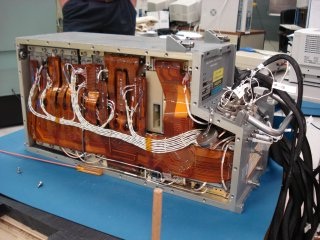Introducing No Fault Found
 No Fault Found (NFF) problems regularly thwart those who operate and support aerospace and defence platforms.
No Fault Found (NFF) problems regularly thwart those who operate and support aerospace and defence platforms.
This persistent problem is being tackled by Copernicus Technology; by the EPSRC Through-Life Engineering Services research centre at Cranfield University; and by UK and US industry working groups.
What is No Fault Found?
For fault diagnosis to be successful the genuine root cause of the fault must be isolated and rectified: the aircraft is then made serviceable and airworthy. NFFs occur when the root cause cannot be found. This leads to unsuccessful repairs which are then followed by recurrences of the original fault, known as ‘repeat arisings’.
How big is the problem?
The precise extent is difficult to quantify.
Published statistics are rarely definitive, yet they strongly indicate that avionics constitute 75% of aircraft NFF occurrences and that avionics NFF rates are approximately 40% or higher.
In an industry-wide 2012 survey conducted by Copernicus Technology:
-
67% of participants could not quantify the cost impact of NFF on their organisation
-
40% did not know the impact of NFF on Availability
Does your project team or squadron have performance measures for the mission impact of NFF, the cost of NFF and the ability to deal effectively with NFF?
No Fault Found and Intermittent Faults
Copernicus Technology’s experience in this field was fully echoed by the aforementioned NFF survey’s results. Intermittent faults, coupled with the maintenance capability to deal with them (ie experience, test equipment, training and troubleshooting manuals) comprise the leading cause of NFF problems. Intermittency in avionics and wiring is caused by degradation of their interconnections’ integrity, which results from the effects of the operating environment, maintenance disturbance and degradation mechanisms such as fretting corrosion. Intermittency may last for as little as nanoseconds, causing intermittent symptoms.
These are extremely difficult for technicians to detect and isolate during repairs, meaning that they routinely resort to speculative LRU replacements, only for the original fault to return.
What is the Impact?
The total cost of NFF comprises the costs of repeated sorties, plus all of the maintenance and logistics support man-hours and processing costs in Forward and Depth. How much does NFF cost the military across the Air, Land, Sea and C4I domains? Do program offices and integrated project teams know the true cost of the problem?
The NFF research project at Cranfield is building on existing academic and industry data to investigate the cost of the problem in civil and military sectors. A 1997 IATA study estimated NFF costs of $100k per commercial aircraft per year; with NFF as prevalent as ever this now equates to over $180k per aircraft per year. British Airways estimated the annual cost impact at $20M in 2003, and since 2002 a FedEx programme to stop LRUs from being incorrectly sent for repair in NFF situations has been saving them over $2M per year.
Most significant of all is the impact on people. NFF hampers the achievement of operational objectives and incurs additional pressure for busy front-line and support personnel. There are few situations more frustrating than that in which aircrew spend hours planning and briefing for a mission-critical sortie, only to abandon it part way through because of an intermittent fault which the technicians are subsequently unable to diagnose or rectify. The frustration of the aircrew is reflected in equal measure by the frustration felt by those maintenance technicians whose best endeavours to repair the fault result in a dreaded NFF.
The impact of NFF is largely unseen – aircraft technicians are resolutely ‘can do’ people and work round NFF problems to get the job done.
But front-line personnel deserve better – they deserve solutions that genuinely reduce NFF, rather than solutions which are mere ‘sticking plasters’.
[This Copernicus Technology article was first published in the Defence Management Journal - Issue 58, Autumn 2012]
